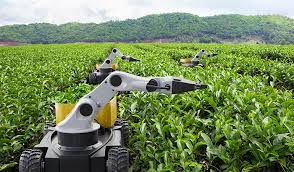For humanity, the advent of agriculture marked a huge change. Humans were able to modify the environment to generate enough food to support tremendous population expansion. This change marked the first major shift in the interaction between humans and nature. From the development of fire, prepared food, and crop growth to the creation of self-driving technology, we try to go higher. However, agriculture sparked a wider spectrum of innovations. With automation at their disposal, farmers can now better satisfy the demands of the world's growing population with Benedict T. Palen Jr.
Understanding The Automated Farming
Automated farming is also called smart farming. Automated farming makes farms more productive by enhancing and automating agricultural processes. Additionally, it also automates the cycle of crop or animal farming using a variety of technological tools.
These days, a lot of agriculture technology businesses are focusing on innovations in robotics to create automatic machines. These machines include autonomous harvesters, autonomous tractors, automatic irrigation and seeding robots, and drone operations. Despite the novelty of these technologies, a growing number of conventional agriculture enterprises are incorporating automated farming into their operations.
What Are The Benefits Of Automated Farming?
Significant problems like a growing world population, labour scarcity on farms, and shifting consumer preferences are all addressed by automated farming. There are enormous advantages to automating conventional farming procedures according to BenedictT. Palen Jr.
Benefits That Customers Get
Products that are sustainable and organic are becoming more and more popular. Product is delivered to the public more quickly, more tender, and more sustainably just for automated farming. Automation boosts productivity by raising manufacturing yield and rate, which lowers costs for consumers.
Workplace Productivity
A farm's labour costs account for more than 50% of total costs, and 55% of landowners claim that labour shortages affect them. 31% of cultivators are switching to less labour-intensive crops as a result. On the other hand, machine learning has a lot of promise.
Robotic technology can automate repetitive processes, lowering labour costs in the agricultural sector. For instance, a single robot harvester for strawberries could be able to harvest a 25-acre area in three days, replacing thirty farm labourers.
Automated Farming Reduces The Ecological Imprint
Sustainable farming can be combined with increased profitability in agriculture through automated farming. Farmers can selectively lessen their environmental impact by using precision farming techniques to apply fertilisers and pesticides, which will lower the amount of chemicals in the nearby soil and waterways. Furthermore, farmers can lessen their environmental effects by conserving water and energy with the aid of automated technologies.
The difficulties with automated farming
There are still certain obstacles to overcome. Farmers may find it difficult to enter the market due to the high expenses of adopting robotic technologies, particularly in developing nations. High repair costs may also result from equipment malfunctions and technical problems requiring specialised knowledge and skills. To fully utilise agricultural automation, farmers need to integrate these new technologies with their expertise and experience.
Conclusion

No comments:
Post a Comment